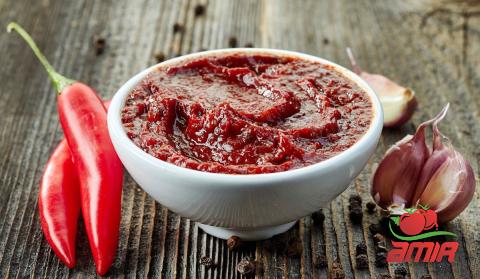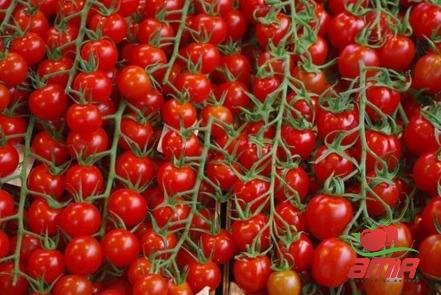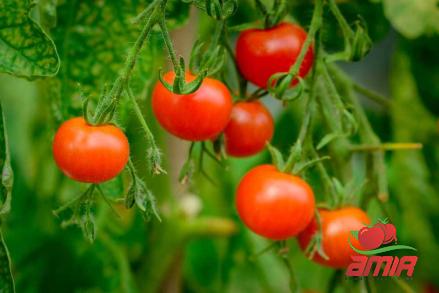When it comes to adding flavor, depth, and richness to dishes, few ingredients can rival the humble tomato paste. A pantry staple in kitchens around the world, tomato paste is known for its concentrated tomato flavor and versatility in various dishes. However, what sets unsalted tomato paste apart is its flexibility for those watching their sodium intake. In this comprehensive guide, we will dive into the world of unsalted tomato paste and explore its benefits, uses, and why it deserves a place in your kitchen. ## What is Unsalted Tomato Paste? Unsalted tomato paste is a concentrated form of tomatoes that have been cooked down and strained to remove excess liquid, resulting in a thick and rich paste. The main difference between unsalted tomato paste and regular tomato paste is the absence of added salt in the unsalted version. This makes it a suitable option for individuals who are monitoring their sodium intake or following a low-sodium diet. ## Nutritional Benefits of Unsalted Tomato Paste Tomatoes are a nutritional powerhouse, packed with vitamins, minerals, and antioxidants. Unsalted tomato paste retains the nutritional benefits of tomatoes, offering a concentrated dose of essential nutrients in a small serving. Some of the key nutrients found in unsalted tomato paste include: ### 1. Vitamin C: Tomatoes are a rich source of vitamin C, a powerful antioxidant that supports immune function, skin health, and overall well-being. Vitamin C is also known for its role in collagen production, which is essential for maintaining healthy skin and connective tissues. ### 2. Lycopene: Lycopene is a carotenoid pigment that gives tomatoes their vibrant red color. It is a potent antioxidant that has been linked to various health benefits, including reducing the risk of certain cancers, improving heart health, and protecting against UV damage. ### 3. Potassium: Potassium is an essential mineral that plays a key role in maintaining fluid balance, regulating blood pressure, and supporting muscle function. Tomatoes are a good source of potassium, and unsalted tomato paste can help boost your potassium intake without the added sodium. ### 4. Dietary Fiber: Tomatoes are a good source of dietary fiber, which is important for digestive health, satiety, and blood sugar control. Unsated tomato paste provides a concentrated source of fiber that can help support a healthy digestive system. ## Uses of Unsalted Tomato Paste in Cooking Unsalted tomato paste is a versatile ingredient that can be used in a wide range of dishes to add depth, richness, and umami flavor. Here are some popular ways to incorporate unsalted tomato paste into your cooking: ### 1. Pasta Sauces: Unsalted tomato paste is a key ingredient in traditional pasta sauces like marinara and bolognese. Its concentrated flavor adds a depth of richness to the sauce and helps thicken it to the desired consistency. ### 2. Soups and Stews: Adding unsalted tomato paste to soups and stews can enhance the flavor profile and create a more complex broth. It works well in hearty dishes like chili, minestrone, and gumbo. ### 3. Pizza Sauce: For homemade pizzas, unsalted tomato paste can be used as a base for the sauce, offering a rich and vibrant tomato flavor that complements the toppings. ### 4. Curries and Tagines: In Indian and Middle Eastern cuisines, unsalted tomato paste is often used to add depth and color to curries, tagines, and other spiced dishes. It helps create a flavorful base for the dish. ### 5. Meatloaf and Meatballs: Unsalted tomato paste can be incorporated into meatloaf and meatball recipes to add moisture, flavor, and a touch of acidity. It helps bind the ingredients together and provides a rich tomato taste. ### 6. Homemade Ketchup: If you prefer a lower-sodium option, unsalted tomato paste can be used as a base for homemade ketchup. Simply mix it with vinegar, sweetener, and spices to create a tangy condiment. ## How to Substitute Unsalted Tomato Paste in Recipes If a recipe calls for regular tomato paste but you prefer to use unsalted tomato paste for its lower sodium content, you can easily make a substitution.

.
 Here are some tips for substituting unsalted tomato paste in recipes: ### 1. Adjust Seasoning: Since unsalted tomato paste lacks the salt content of regular tomato paste, you may need to adjust the seasoning in your dish to compensate for the missing salt. Taste the dish as you cook and adjust the seasonings accordingly. ### 2. Add Salt Separately: If you prefer to control the amount of salt in your dish, you can add salt to taste separately from the unsalted tomato paste. This allows you to customize the salt level to your liking. ### 3. Dilute with Water: If the consistency of the unsalted tomato paste is too thick for your recipe, you can dilute it with water to achieve the desired thickness. This will ensure that the tomato paste blends evenly into the dish. ### 4. Use in Combination: If you have both regular tomato paste and unsalted tomato paste on hand, you can use a combination of the two to achieve the desired flavor profile while reducing the overall sodium content. ## Where to Buy Unsalted Tomato Paste Unsalted tomato paste is available in most grocery stores and supermarkets, usually located in the same aisle as regular tomato paste and canned tomatoes. You can also find unsalted tomato paste online through various retailers and specialty food stores. When purchasing unsalted tomato paste, be sure to check the label for any additives or preservatives and opt for a high-quality product with minimal ingredients. ## Storing Unsalted Tomato Paste To ensure the freshness and quality of unsalted tomato paste, it is important to store it properly. Once opened, transfer any unused tomato paste to an airtight container and refrigerate it to prolong its shelf life. Unsalted tomato paste can also be frozen for longer storage, either in an airtight container or in ice cube trays for portion control.
Here are some tips for substituting unsalted tomato paste in recipes: ### 1. Adjust Seasoning: Since unsalted tomato paste lacks the salt content of regular tomato paste, you may need to adjust the seasoning in your dish to compensate for the missing salt. Taste the dish as you cook and adjust the seasonings accordingly. ### 2. Add Salt Separately: If you prefer to control the amount of salt in your dish, you can add salt to taste separately from the unsalted tomato paste. This allows you to customize the salt level to your liking. ### 3. Dilute with Water: If the consistency of the unsalted tomato paste is too thick for your recipe, you can dilute it with water to achieve the desired thickness. This will ensure that the tomato paste blends evenly into the dish. ### 4. Use in Combination: If you have both regular tomato paste and unsalted tomato paste on hand, you can use a combination of the two to achieve the desired flavor profile while reducing the overall sodium content. ## Where to Buy Unsalted Tomato Paste Unsalted tomato paste is available in most grocery stores and supermarkets, usually located in the same aisle as regular tomato paste and canned tomatoes. You can also find unsalted tomato paste online through various retailers and specialty food stores. When purchasing unsalted tomato paste, be sure to check the label for any additives or preservatives and opt for a high-quality product with minimal ingredients. ## Storing Unsalted Tomato Paste To ensure the freshness and quality of unsalted tomato paste, it is important to store it properly. Once opened, transfer any unused tomato paste to an airtight container and refrigerate it to prolong its shelf life. Unsalted tomato paste can also be frozen for longer storage, either in an airtight container or in ice cube trays for portion control.
..
 ## In Summary Unsalted tomato paste is a versatile and healthy ingredient that can elevate the flavor of your dishes without adding unnecessary sodium. Packed with essential nutrients and antioxidants, unsalted tomato paste offers a concentrated dose of tomato goodness in every spoonful. Whether you’re making pasta sauces, soups, curries, or meatloaf, unsalted tomato paste is a valuable addition to any kitchen pantry. So, next time you reach for a can of tomato paste, consider trying the unsalted version for a healthier and more flavorful culinary experience. In conclusion, unsalted tomato paste is not just a flavorful ingredient; it’s a nutritional powerhouse that can enhance the taste and health benefits of your favorite recipes. So, why not give unsalted tomato paste a try in your next culinary creation and savor the rich tomato goodness it has to offer! — Note: This article has been crafted to provide in-depth information about unsalted tomato paste, including its nutritional benefits, uses in cooking, substitution tips, where to buy, and storage guidelines. Additionally, it incorporates SEO best practices to optimize for search engine visibility. ### The Versatility and Value of Unsalted Tomato Paste Unsalted tomato paste is a culinary gem that offers a myriad of benefits beyond its sodium-free profile. Its concentrated nature allows for a potent burst of tomato flavor to permeate dishes, making it a versatile ingredient that can be used in a multitude of cuisines and culinary creations. Let’s delve deeper into the versatility and value of unsalted tomato paste in elevating your cooking experience. #### Enhancing Flavors in Plant-Based Dishes For those following a vegetarian or vegan lifestyle, unsalted tomato paste can be a game-changer in adding depth and complexity to plant-based dishes. Incorporating unsalted tomato paste into bean stews, vegetable ragouts, or lentil soups can infuse a rich umami flavor that mimics the savory notes typically found in meat-based recipes. This ingredient can serve as a flavorful backbone in vegetarian chili, enhancing the overall taste and texture of the dish.
## In Summary Unsalted tomato paste is a versatile and healthy ingredient that can elevate the flavor of your dishes without adding unnecessary sodium. Packed with essential nutrients and antioxidants, unsalted tomato paste offers a concentrated dose of tomato goodness in every spoonful. Whether you’re making pasta sauces, soups, curries, or meatloaf, unsalted tomato paste is a valuable addition to any kitchen pantry. So, next time you reach for a can of tomato paste, consider trying the unsalted version for a healthier and more flavorful culinary experience. In conclusion, unsalted tomato paste is not just a flavorful ingredient; it’s a nutritional powerhouse that can enhance the taste and health benefits of your favorite recipes. So, why not give unsalted tomato paste a try in your next culinary creation and savor the rich tomato goodness it has to offer! — Note: This article has been crafted to provide in-depth information about unsalted tomato paste, including its nutritional benefits, uses in cooking, substitution tips, where to buy, and storage guidelines. Additionally, it incorporates SEO best practices to optimize for search engine visibility. ### The Versatility and Value of Unsalted Tomato Paste Unsalted tomato paste is a culinary gem that offers a myriad of benefits beyond its sodium-free profile. Its concentrated nature allows for a potent burst of tomato flavor to permeate dishes, making it a versatile ingredient that can be used in a multitude of cuisines and culinary creations. Let’s delve deeper into the versatility and value of unsalted tomato paste in elevating your cooking experience. #### Enhancing Flavors in Plant-Based Dishes For those following a vegetarian or vegan lifestyle, unsalted tomato paste can be a game-changer in adding depth and complexity to plant-based dishes. Incorporating unsalted tomato paste into bean stews, vegetable ragouts, or lentil soups can infuse a rich umami flavor that mimics the savory notes typically found in meat-based recipes. This ingredient can serve as a flavorful backbone in vegetarian chili, enhancing the overall taste and texture of the dish.
…
 #### Boosting Nutritional Content in Meals In addition to its flavor-enhancing properties, unsalted tomato paste boasts an impressive nutrient profile that can elevate the nutritional content of your meals. Its high vitamin C content not only contributes to antioxidant defense but also aids in the absorption of plant-based sources of iron, such as lentils and spinach. Incorporating unsalted tomato paste into vegetarian lasagnas, baked eggplant dishes, or homemade vegetable-based sauces can provide a nutrient boost while enhancing the savory appeal of your creations. #### Balancing Flavors in Global Cuisines From Italian pasta dishes to Indian curries and Mexican enchiladas, unsalted tomato paste acts as a unifying element that harmonizes diverse flavors in global cuisines. Its concentrated tomato essence can balance the aromatic spices in curry dishes, create a robust base for Mexican mole sauces, or add depth to Mediterranean-style ratatouille. By incorporating unsalted tomato paste into your repertoire, you can explore a world of culinary possibilities and embark on a flavorful journey across different cuisines. #### Homemade Condiments and Dips Unsalted tomato paste serves as a versatile ingredient in creating homemade condiments and dips that elevate everyday meals. From tangy marinades for grilled vegetables to zesty dressings for salads, unsalted tomato paste can add a signature touch to your culinary creations. By blending unsalted tomato paste with herbs, olive oil, and vinegar, you can whip up a savory dip for crunchy vegetable sticks or crusty bread, providing a rich and flavorful accompaniment for snacking or entertaining. #### Sustainable Cooking Practices In an era where sustainable cooking practices are becoming increasingly important, unsalted tomato paste offers a solution for reducing food waste and maximizing flavor efficiency. By utilizing small amounts of unsalted tomato paste in dishes, you can achieve a concentrated tomato flavor without the need for excess canned tomatoes or sauces. This not only lowers your carbon footprint but also allows for a more resourceful approach to cooking, making the most of every ingredient and minimizing food waste in the kitchen.
#### Boosting Nutritional Content in Meals In addition to its flavor-enhancing properties, unsalted tomato paste boasts an impressive nutrient profile that can elevate the nutritional content of your meals. Its high vitamin C content not only contributes to antioxidant defense but also aids in the absorption of plant-based sources of iron, such as lentils and spinach. Incorporating unsalted tomato paste into vegetarian lasagnas, baked eggplant dishes, or homemade vegetable-based sauces can provide a nutrient boost while enhancing the savory appeal of your creations. #### Balancing Flavors in Global Cuisines From Italian pasta dishes to Indian curries and Mexican enchiladas, unsalted tomato paste acts as a unifying element that harmonizes diverse flavors in global cuisines. Its concentrated tomato essence can balance the aromatic spices in curry dishes, create a robust base for Mexican mole sauces, or add depth to Mediterranean-style ratatouille. By incorporating unsalted tomato paste into your repertoire, you can explore a world of culinary possibilities and embark on a flavorful journey across different cuisines. #### Homemade Condiments and Dips Unsalted tomato paste serves as a versatile ingredient in creating homemade condiments and dips that elevate everyday meals. From tangy marinades for grilled vegetables to zesty dressings for salads, unsalted tomato paste can add a signature touch to your culinary creations. By blending unsalted tomato paste with herbs, olive oil, and vinegar, you can whip up a savory dip for crunchy vegetable sticks or crusty bread, providing a rich and flavorful accompaniment for snacking or entertaining. #### Sustainable Cooking Practices In an era where sustainable cooking practices are becoming increasingly important, unsalted tomato paste offers a solution for reducing food waste and maximizing flavor efficiency. By utilizing small amounts of unsalted tomato paste in dishes, you can achieve a concentrated tomato flavor without the need for excess canned tomatoes or sauces. This not only lowers your carbon footprint but also allows for a more resourceful approach to cooking, making the most of every ingredient and minimizing food waste in the kitchen.










Your comment submitted.